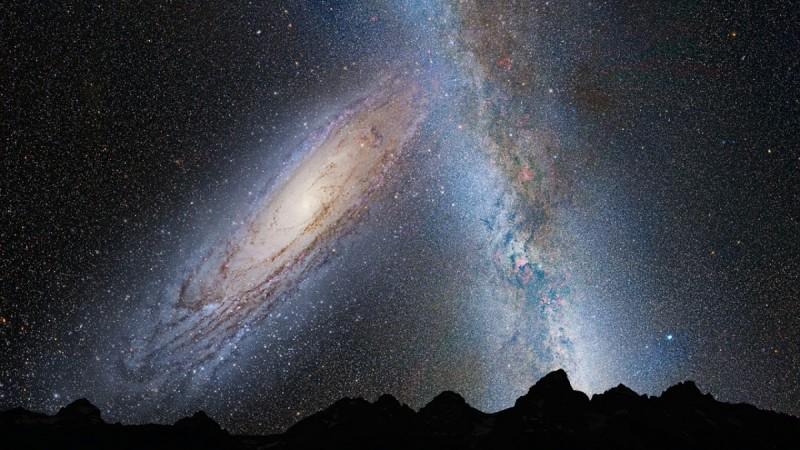
The age-old belief that humans are made of stardust seems to have been proven right. New research was conducted by astronomers, who surveyed 150,000 stars to test the authenticity of this adage, and the result was surprising to say the least!
Also Read: Apocalypse avoided: Earth just escaped an asteroid hit! And you weren't even aware of it
Research found that us humans and our galaxy are composed of the same type of atoms and elements, according a statement by Sloan Digital Sky Survey (SDSS).
"For the first time, we can now study the distribution of elements across our Galaxy," said Sten Hasselquist of New Mexico State University, as quoted in a SDSS press release.
"The elements we measure include the atoms that make up 97% of the mass of the human body," Hasselquist added.
Stars are made up of almost two dozen chemical elements, but researchers only listed those elements that are considered to be the building blocks of life on Earth: carbon, hydrogen, nitrogen, oxygen, phosphorus and sulphur -- abbreviated as CHNOPS.
Astronomers analysed and listed the presence of these elements in 150,000 stars in the Milky Way galaxy.
Researchers used spectroscopy -- measuring the interaction between matter and electromagnetic radiation -- to calculate the presence of each element.
It was found that a unique wavelength of light was emitted by each element from within a star. Bright and dark patches on the stars' light spectrum were calculated in order to detect what they were composed of.
The Apache Point Observatory Galactic Evolution Experiment (APOGEE) spectrograph, located in New Mexico, was used by SDSS researchers.
The APOGEE can see through the dust in our Milky Way using infrared wavelengths that pass through it; enabling them to observe a wide range of wavelengths in minute detail.
"This instrument collects light in the near-infrared part of the electromagnetic spectrum and disperses it, like a prism, to reveal signatures of different elements in the atmospheres of stars," Sloan representatives stated in an SDSS press release.
"A fraction of the almost 200,000 stars surveyed by APOGEE overlap with the sample of stars targeted by the NASA Kepler mission, which was designed to find potentially Earth-like planets," they added. "The work presented today focuses on 90 Kepler stars that show evidence of hosting rocky planets, and which have also been surveyed by APOGEE."
Though the elements that humans and stars consist of were found to be the same, the quantities in which these elements were present differed.
For example, the presence of oxygen in humans was found to be around 65% by mass, whereas it was found to be below 1% present in star spectra.
The presence of each of the elements of life differed based on the area of the galaxy they were found in.
The Sun is present at the edge of the spiral arms of the Milky Way, and such stars are found to consist of fewer heavy elements like oxygen -- needed for life. These elements are found to be present in larger quantities in stars located more centrally in the galaxy, the research revealed.
"It's a great human-interest story that we are now able to map the abundance of all of the major elements found in the human body across hundreds of thousands of stars in our Milky Way," Jennifer Johnson, the science team chair of the SDSS-III APOGEE survey and a professor at The Ohio State University, said in the statement.
"This allows us to place constraints on when and where in our galaxy life had the required elements to evolve, a sort of 'temporal galactic habitable zone'," Johnson concluded.









